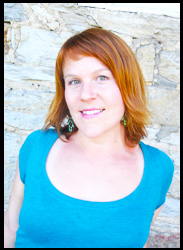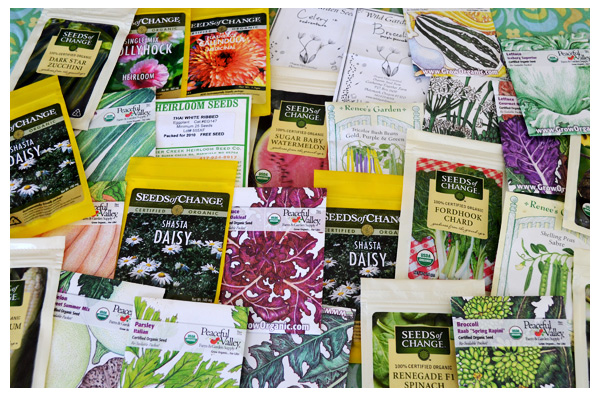by guest blogger Robyn Jasko, cofounder of Grow Indie
The seed catalogs that have probably filled your mailbox over the past few months are awfully tempting with their gorgeous pictures and fancy new varieties, but with so many terms (organic, hybrid, open-pollinated, and such) used to describe them, what does it all mean? On the flip side, some catalogs don’t even have labels, making you wonder exactly where they get their seeds—and what’s been done to them.
Here’s a quick guide to help you decipher your seed catalog so you can get to the fun part, starting your seeds:
Organic Seeds
Organic seeds are grown, saved, and stored without the use of synthetic fertilizers, pesticides, antibiotics, food additives, irradiation, or biosolids. Organic seeds can be heirloom and/or hybrid, but are never genetically modified. To get the safest seedstock, I always recommend buying organic whenever possible, to help keep GMOs and pesticides off your plate and out of your garden. High Mowing Seeds in Vermont and California-based Seeds of Change both have an amazing array of 100 percent organic seeds to pick from that really can’t be beat.
Heirloom Seeds
The term heirloom is used to define a true seed that has been around for at least 50 years, most likely a lot longer. Heirlooms also have an amazing flavor that is unlike anything you’ll find in conventional produce. These varieties remind us of what vegetables used to taste like before the mass industrialization of food came into play.
Heirloom seeds are usually open-pollinated, meaning that wind or insects fertilize the seed. They’ll breed true to their parent plants, so if you harvest the seeds and replant them you will get the same variety. Heirlooms are key to having a truly sustainable garden, since you won’t have to buy seeds every year and can actually save a ton of money this way. Looking to try some heirlooms this year? Baker Creek Heirloom Seeds has a beautiful selection of more than 1,400 different heirloom vegetables, herbs, and flowers.
Genetically Modified Seeds
These are the ones you want to stay as far away from as possible. Genetically modified (GM) seeds (aka, Frankenseeds) are created when a scientist inserts genetic material from another plant or species to add a characteristic that is not naturally there. No, it’s not out of a Phillip K. Dick novel, this science is happening today, and GMs are more prevalent than many people think. According to the Center for Food Safety, up to 85 percent of U.S. corn and 91 percent of domestic soybeans have been genetically altered. As a result, they estimate that 70 percent of the processed food that makes it way onto supermarket shelves in this country is GM as well. Man-made and controversial, more studies are coming out showing the irreversible health and environmental effects that GM crops are having on people and animals as they infiltrate the food supply. But until they are outlawed, we are the guinea pigs.
Hybrid Seeds
Not to be confused with GM seeds, hybrids are naturally bred for beneficial characteristics like disease and insect resistance, new flower types, improved vitamin content in vegetables and grains. The downside with hybrids is that their seed doesn’t resemble the parent plant, so you cannot reliably save their seeds and create your own sustainable seed source. The upside? Hybrids are usually easier to grow since they have been bred for their favorable traits. Renee’s Garden Seeds offers a wide variety of hybrid seeds, heirloom, and organic seeds that are, hands down, the easiest seeds I have ever grown.
The Safe Seed Pledge
More than 200 seed companies have taken the Safe Seed Pledge, confirming that they will not knowingly sell GM seeds to farmers and home gardeners. Check your favorite seed catalog to see if it’s a company that has taken the pledge—it’s usually listed prominently in the first few pages of the catalog—and if in doubt, call and ask.
 Robyn Jasko, creative services director at Runner’s World magazine at Rodale, is a local-foods activist, community garden starter, and cofounder of Grow Indie, a site promoting sustainable lifestyles, homesteading, eating well, and living local. Her first book, Homesweet Homegrown: How to Grow, Make and Store Food, No Matter Where You Live, was released May 2012.
Robyn Jasko, creative services director at Runner’s World magazine at Rodale, is a local-foods activist, community garden starter, and cofounder of Grow Indie, a site promoting sustainable lifestyles, homesteading, eating well, and living local. Her first book, Homesweet Homegrown: How to Grow, Make and Store Food, No Matter Where You Live, was released May 2012.





No comments yet.